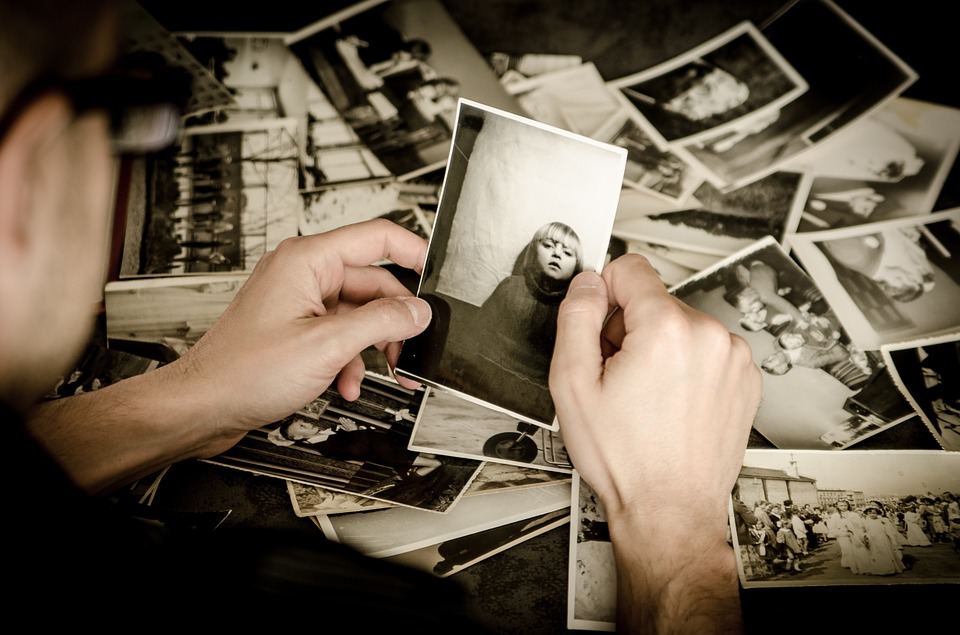Humans are storytellers by nature. Stories – whether rooted in ancient myths, family histories or photos – are important because they literally create our understanding of reality. Photos are unique in that they enable a type of storytelling that is both emotionally and visually profound.
Think of how enjoyable it is to flip through the pages of an old family album. Before the digital era, albums allowed us to pass on a sense of identity to our children. They prompted stories and discussions about different people, places and eras.
A mountain of a problem
But our relationship with photos changed forever following the digital revolution in the first part of this millennium. This is when the cost of taking a picture dropped, from about a dime in the film era to zero in the digital one.
Taking a picture is now the photographic equivalent of picking up bargains at a sale. We can’t pass up the opportunity although we’re not entirely sure what we are going to do with all those images later (or that marked down lime green polo shirt, for that matter).
Consider some of the numbers. Last year, the total number of digital photos taken was 1.3 trillion. Compare that with 86 billion, the highest annual number recorded for film in 2000, just before it began its downward plunge.
But now we have a dual problem on our hands. While our digital collection is growing uncontrollably, we still have countless analog memories waiting to be salvaged.
People have different levels of motivation when it comes to managing their photographic memories. On one end of the spectrum are people who are enthusiastic photographers or photo savers, but rarely do anything with their images. On the other end are people who spend time organizing, sorting and curating their collection. They want to get it in a shape that can be showcased and shared more easily.
Most of us fall somewhere in between.
But as our combined photo piles get bigger, we may be giving up. In a survey we conducted in 2014, 40% of respondents said they had stopped worrying about photos buried in physical or digital shoeboxes. Most of them also said that they had no time to look at their pictures, let alone mine them for meaningful stories.
But we are in real danger of losing many valuable memories if we are not more proactive in preserving them. We need to develop systems for both storing our photos and easily retrieving them. As photographer and memory evangelist Kevin Gilbert said in a 2014 TED talk: “a photo is worthless if you can’t find it”. If we don’t act now to digitize, sort and backup our images, we could lose entire sets of them in the time it takes for a hard drive to be corrupted or a basement to be flooded.
Less daunting than we think
So, what can we do about it? For starters, we can seek help. Digitizing photographic prints and film, for example, is a task that is best outsourced. You can spend hours running a stack of photos through a scanner or you can ship them to a service to tackle. You can invest time and money to digitize 35mm slides in your collection, or rely on a specialist to get the job done. If you want to convert negatives to digital images and uncover the memories locked in these strips, a reliable service can again ease the task for you.
Digitization makes your old images more accessible and easier to weave into albums, collages and other keepsakes. And with the growing number of solutions to help organize and curate our digital collection, creating a photo book or story is also no longer the tedious task it used to be.
Humans are hardwired to respond to memories and images from the past. In the TV series Mad Men, Jon Hamm’s character, Don Draper, nails the essence of nostalgia when describing how it can be used in advertising to build a deeper connection with a product.
“This device”, Draper says, “isn’t a spaceship, it’s a time machine. It goes backwards, and forwards… it takes us to a place where we ache to go again. It lets us travel the way a child travels – around and around, and back home again, to a place where we know we are loved.”
A box or folder of buried photos won’t transport us to that special place. But a beautiful photo story definitely can. In an ideal world, everybody sitting on a trove of personal photos would be a storyteller. We can get there – with a little bit of help.
Author Bio- Laurent Martin is a co-founder and CEO of Scancafe (a photo digitization and restoration service) and Photogurus (a digital photo story design service). An avid photographer and windsurfer, he believes in the importance of helping people preserve photographic memories so that they are easier to share and enjoy.”


Leave a Reply